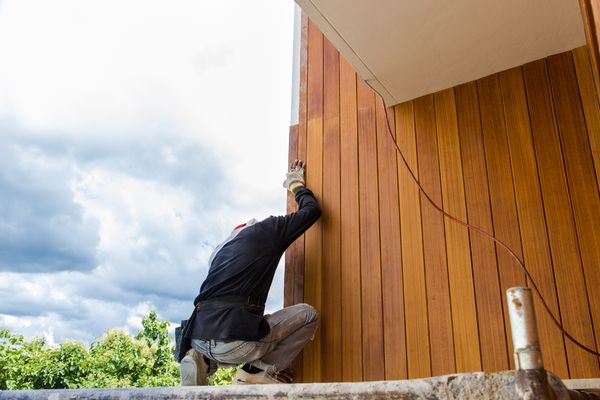There are several choices when choosing new siding for your house. For homeowners who like the look of wood, but not the complications that come with it, fiber cement siding may be the product for you. Fiber cement is a mix of cellulose, water, Portland cement, and sand or fly ash (a byproduct of burning coal). It is produced by several siding manufacturers, including GAF.
The History of Fiber Cement
In 1901, an inventor by the name of Ludwig Hatschek patented a process for making a fiber cement sheet reinforced with asbestos. He called it “Eternit,” from the Latin aeternus, which means eternal or everlasting. Eternit® is now a registered trademark of Etex. Etex is a Belgian company that produces fiber-cement building materials.
When it first debuted, fiber cement included asbestos. By the mid 1980s, cellulose replaced asbestos for reinforcement due to the safety concerns of using asbestos. The fiber cement products of today contain no asbestos.
James Hardie Building Products, the company founded by a Scottish immigrant to Australia, in the late 1800s, moved into fiber cement building technology in the 1980s. James Hardie is probably the most well-known manufacturer of fiber cement products.
Outperforming Wood
In many ways, fiber cement surpasses wood as a desirable siding material. It may be purchased in textures that have the appearance of wood shingles, clapboards, or wood board and batten siding.
Fiber cement is superior to wood because:
- It is not susceptible to attacks from termites or ants.
- It will not split or rot.
- It is fire-resistant.
- Fiber cement siding holds paint well and is low maintenance.
- It resists warping and UV degradation.
- Warranties are generally 25-50 years.
- Fiber cement siding is more economical than wood.
Like wood, fiber cement siding needs to be painted, but it holds paint much longer. And it can be painted any color you like! Vinyl siding is usually limited to light colors, but fiber cement can even be painted in darker colors.
Fiber Cement vs. Other Types of Siding
We’ve already mentioned that wood is vulnerable to fire, insects, splitting, and rotting. You may wonder if brick or stone would be better. Brick and stone, while resistant to rotting, fire, and insects, are heavier and costlier than fiber cement siding. Vinyl siding is lightweight and low-maintenance, but it melts in cases of fire and cannot withstand high winds. Aluminum siding is resistant to rotting, but dents easily. Stucco, a cement-based material, is fire-resistant and durable, but is vulnerable to water damage and requires special care for cleaning and painting.
All-in-all, fiber cement is a superior choice for siding. It provides the best value and ROI. If your current siding is rotting, warping, cracking, or allowing moisture or mildew to form inside your home, it’s time to replace your siding. When choosing your siding material, ask your contractor about fiber cement siding and whether it is a good option for your home.
For a free siding quote, call Oaks Construction at 585.247.OAKS today.

